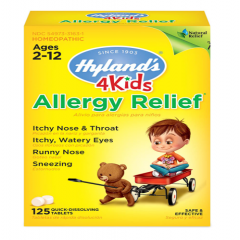-
 Thanh toán đa dạng, linh hoạtChuyển khoản ngân hàng, thanh toán tại nhà...
Thanh toán đa dạng, linh hoạtChuyển khoản ngân hàng, thanh toán tại nhà... -
 Miễn Phí vận chuyển 53 tỉnh thànhMiễn phí vận chuyển đối với đơn hàng trên 1 triệu
Miễn Phí vận chuyển 53 tỉnh thànhMiễn phí vận chuyển đối với đơn hàng trên 1 triệu -
 Yên Tâm mua sắmHoàn tiền trong vòng 7 ngày...
Yên Tâm mua sắmHoàn tiền trong vòng 7 ngày...
A Peterson Field Guide To Western Medicinal Plants And Herbs (Peterson Field Guides)
-

- Mã sản phẩm: 0395838061
- (403 nhận xét)

- Publisher:Mariner Books; Illustrated edition (April 18, 2002)
- Language:English
- Paperback:464 pages
- ISBN-10:0395838061
- ISBN-13:978-0395838068
- Item Weight:1.5 pounds
- Dimensions:4.5 x 1.21 x 7.25 inches
- Best Sellers Rank:#100,716 in Books (See Top 100 in Books) #100 in Botany (Books) #146 in Outdoors & Nature Reference #218 in Herbal Remedies (Books)
- Customer Reviews:4.7 out of 5 stars 403Reviews

Mô tả sản phẩm
About the Author
Christopher Hobbs, a licensed acupuncturist and herbalist, teacher, and consultant to the dietary supplement industry, has written many books on herbal medicine, including Herbs for Dummies and Dietary Supplements for Dummies.
With more than 40 years of experience in the herbal field, Steven Foster is author, co-author, and photographer of seventeen books. He lives in Eureka Springs Arkansas, in the heart of the medicinal plant-rich Ozarks.
Product Description
The most complete guide ever written on the medicinal plants of western North America.
Peterson Field Guide to Western Medicinal Plants and Herbs offers the best information in the world on the current popular and traditional uses of the nearly 500 species covered—much of it available for the first time.
This comprehensive guide contains more than 530 color photographs that illustrate the plants and their flowers, leaves, and fruits; the descriptive text combines scientific, ethnobotanical, and cross-cultural information. What's more, the index to medical topics is helpful for quickly locating information on specific ailments, while symbols next to the plant descriptions provide quick visual warnings for poisonous and allergenic plants. Organized by flower color for fast identification, this guide is an essential aid to appreciating native plants and the wild areas they inhabit.
For more than 85 years, Peterson Field Guides have set the standard by which other field guides are measured. Comprehensive and authoritative, they are essential additions to any naturalist's bookshelf or backpack.
Excerpt. © Reprinted by permission. All rights reserved.
Miscellaneous Showy Flowers BUNCHBERRY Leaves, roots, berries Cornus canadensis L. Dogwood Family
Low-growing, spreading perennial, 3–8 in., often forming large colonies. Oval leaves in whorls of 6 beneath showy “flowers” (bracts); veins arch from leaf base toward tip; margins entire. Small, greenish white flowers tightly clustered above 4 large, white, petallike bracts; May–July. Fruit scarlet, single-seeded. Where found: Moist, cool forests, meadows, bogs. Alaska to Idaho, Mont. south to N.M., nw. Calif. eastern N. America. Uses: American Indians toasted the leaves, then sprinkled the powder on sores. Berries were a snack source, dried and stored for winter; also chewed to treat insanity. Leaf tea drunk as a strong laxative and to treat paralysis. The Paiutes mashed and strained the roots and used the liquid as a wash for sore eyes. Tea of the whole plant was taken for coughs, fevers, and tuberculosis. Tea from roots, leaves, and berries was drunk for fits. A root tea was given to babies for colic. Bark tea drunk for body pains.
ICE-PLANT, SEA FIG Leaves Mesembryanthemum crystallinum L. Carpet Weed Family
Multibranched, bumpy-stemmed perennial, spreading along ground; to 24 in. high. Leaves succulent, alternate, flat, ovate to spoon-shaped; margins wavy. Flowers stalkless in leaf axils, showy, white to red- tinged, with many stamens and 5 linear petals; Mar.–Oct. Bumpy fruit opening when moist. Where found: Saline soils near coast, bluffs, disturbed sites, coastal sage scrub. Along the cen. and s. coast of Calif. to Ariz.; Baja Calif., Mexico; S. America, Mediterranean. Alien (South Africa). Uses: Historically, physicians used leaf juice to soothe inflammation of the mucous membranes of the respiratory or urinary system; to treat painful or difficult urination and involuntary urination. In Europe the fresh juice has been used to treat water retention and painful urination and to soothe lung inflammation. Related species: M. edule L. (Carpobrotus edulis [L.] N. E. Br.), or Hottentot Fig, a common escape in California, is used externally in S. Africa for burns and thrush and internally for dysentery. Warning: High in oxalates, potentially toxic in high doses, especially in flower and fruit.
CANADA VIOLET Whole plant Viola canadensis L. Violet Family Perennial with short, thick rhizome and slender stolons; to 10 in. Leaves heart-shaped or oval on long stalks; tips pointed; margins toothed. Flowers solitary from leaf axils. Petals white above, purple beneath, yellow-centered; bottom petal dark-lined, spurred; side petals hairy at base; Apr.–July. Pod splitting into 3 valves. Where found: Moist to dry woods. Ore. to ne. Wash., Idaho, Utah, Ariz. Rockies from Mont. to N.M.; eastern N. America. Uses: Native Americans used a root tea for pains in the bladder region. Externally, a poultice was used to treat skin abrasions and boils. In European traditions violet species were listed as soothing and softening for coughs and colds, urinary tract ailments, and skin conditions. Warning: Roots of most if not all violet species may induce vomiting.
Copyright © 2002 by Steven Foster and Christopher Hobbs. Reprinted by permission of Houghton Mifflin Company.
- Mua astaxanthin uống có tốt không? Mua ở đâu? 29/10/2018
- Saffron (nhụy hoa nghệ tây) uống như thế nào cho hợp lý? 29/09/2018
- Saffron (nghệ tây) làm đẹp như thế nào? 28/09/2018
- Giải đáp những thắc mắc về viên uống sinh lý Fuji Sumo 14/09/2018
- Công dụng tuyệt vời từ tinh chất tỏi với sức khỏe 12/09/2018
- Mua collagen 82X chính hãng ở đâu? 26/07/2018
- NueGlow mua ở đâu giá chính hãng bao nhiêu? 04/07/2018
- Fucoidan Chính hãng Nhật Bản giá bao nhiêu? 18/05/2018
- Top 5 loại thuốc trị sẹo tốt nhất, hiệu quả với cả sẹo lâu năm 20/03/2018
- Footer chi tiết bài viết 09/03/2018
- Mã vạch không thể phân biệt hàng chính hãng hay hàng giả 10/05/2023
- Thuốc trắng da Ivory Caps chính hãng giá bao nhiêu? Mua ở đâu? 08/12/2022
- Nên thoa kem trắng da body vào lúc nào để đạt hiệu quả cao? 07/12/2022
- Tiêm trắng da toàn thân giá bao nhiêu? Có an toàn không? 06/12/2022
- Top 3 kem dưỡng trắng da được ưa chuộng nhất hiện nay 05/12/2022
- Uống vitamin C có trắng da không? Nên uống như thế nào? 03/12/2022
- [email protected]
- Hotline: 0909977247
- Hotline: 0908897041
- 8h - 17h Từ Thứ 2 - Thứ 7
Đăng ký nhận thông tin qua email để nhận được hàng triệu ưu đãi từ Muathuoctot.com
Tạp chí sức khỏe làm đẹp, Kem chống nắng nào tốt nhất hiện nay Thuoc giam can an toan hiện nay, thuoc collagen, thuoc Dong trung ha thao , thuoc giam can LIC, thuoc shark cartilage thuoc collagen youtheory dau ca omega 3 tot nhat, dong trung ha thao aloha cua my, kem tri seo hieu qua, C ollagen shiseido enriched, và collagen shiseido dạng viên , Collagen de happy ngăn chặn quá trình lão hóa, mua hang tren thuoc virility pills vp-rx tri roi loan cuong duong, vitamin e 400, dieu tri bang thuoc fucoidan, kem chống nhăn vùng mắt, dịch vụ giao hang nhanh nội thành, crest 3d white, fine pure collagen, nên mua collagen shiseido ở đâu, làm sáng mắt, dịch vụ cho thue kho lẻ tại tphcm, thực phẩm tăng cường sinh lý nam, thuoc prenatal bổ sung dinh dưỡng, kem đánh răng crest 3d white, hỗ trợ điều trị tim mạch, thuốc trắng da hiệu quả giúp phục hồi da. thuốc mọc tóc biotin























 KHUYẾN MÃI LỚN
KHUYẾN MÃI LỚN Hỗ Trợ Xương Khớp
Hỗ Trợ Xương Khớp Bổ Não & Tăng cường Trí Nhớ
Bổ Não & Tăng cường Trí Nhớ Bổ Sung Collagen & Làm Đẹp
Bổ Sung Collagen & Làm Đẹp Bổ Thận, Mát Gan & Giải Độc
Bổ Thận, Mát Gan & Giải Độc Chăm Sóc Sức khỏe Nam Giới
Chăm Sóc Sức khỏe Nam Giới Chăm Sóc Sức khỏe Nữ Giới
Chăm Sóc Sức khỏe Nữ Giới Chăm sóc Sức khỏe Trẻ Em
Chăm sóc Sức khỏe Trẻ Em Thực Phẩm Giảm Cân, Ăn Kiêng
Thực Phẩm Giảm Cân, Ăn Kiêng Bổ Sung Vitamin & Khoáng Chất
Bổ Sung Vitamin & Khoáng Chất Bổ Tim Mạch, Huyết Áp & Mỡ Máu
Bổ Tim Mạch, Huyết Áp & Mỡ Máu Bổ Mắt & Tăng cường Thị lực
Bổ Mắt & Tăng cường Thị lực Điều Trị Tai Mũi Họng
Điều Trị Tai Mũi Họng Sức Khỏe Hệ Tiêu hóa
Sức Khỏe Hệ Tiêu hóa Chăm Sóc Răng Miệng
Chăm Sóc Răng Miệng Chống Oxy Hóa & Tảo Biển.
Chống Oxy Hóa & Tảo Biển.